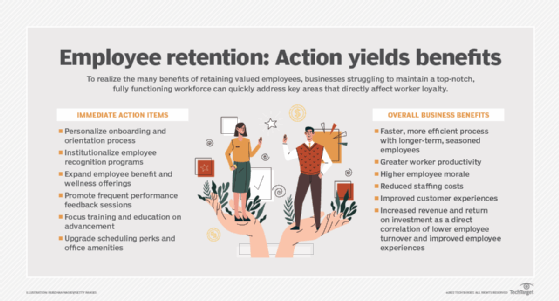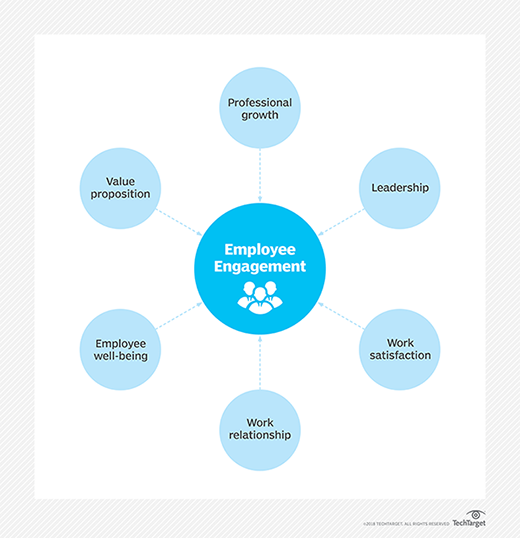employee churn
What is employee churn?
Employee churn is the overall turnover in an organization's staff as existing employees leave and new ones are hired.
The churn rate is usually calculated as the percentage of employees leaving the company over some specified period. Although some staff turnover is inevitable, a high rate of churn is costly. Recruitment, hiring and training all require a financial outlay and a new hire might not be immediately productive in terms of creating profit.
Depending on the job and other factors, it can take a year or more for the organization to break even on a hire and longer before any return on investment (ROI) is realized.
In recent years, the concept of employee churn has evolved to include not only voluntary departures but also involuntary ones, such as layoffs and terminations. This broader understanding helps organizations better analyze and address the underlying causes of churn and improve the overall employee experience.
Causes of high employee churn
An unusually high rate of employee turnover is also considered indicative of problems within the organization. Uncompetitive pay scales, micromanagement, ineffective human resource management practices and unreasonable expectations can all lead to unacceptable levels of staff turnover.
Additional factors contributing to high employee churn include poor workplace culture, lack of career advancement opportunities, inadequate employee recognition, and insufficient work-life balance.
Understanding these factors is crucial for organizations aiming to reduce turnover and improve employee retention.

Impact of employee churn
High employee churn can have several negative impacts on an organization, including the following:
- Increased costs. The costs associated with recruiting, hiring and training new employees can be significant.
- Loss of productivity. New hires might take time to become fully productive, affecting overall organizational performance.
- Decreased morale. Frequent turnover can lead to lower morale among remaining employees, potentially leading to further departures.
- Loss of organizational knowledge. Departing employees take valuable knowledge and experience with them, which can be difficult to replace.
With these challenges in mind, the next section will focus on strategies organizations can employ to help prevent high employee churn.

Strategies to reduce employee churn
Organizations can implement various strategies to reduce employee churn, such as:
- Offer competitive compensation. Offering competitive salaries and benefits through effective compensation management to attract and retain top talent.
- Nurture employee engagement. Fostering a positive workplace culture and engaging employees through recognition and rewards programs.
- Support career development. Providing opportunities for career advancement and professional growth through continuous learning.
- Encourage work-life balance. Promoting a healthy work-life balance through flexible work arrangements and wellness programs.
- Employ effective management. Training managers to support and motivate their teams effectively.

Ultimately, employee churn is a significant challenge for organizations, but by understanding its causes and implementing strategies to address them, companies can reduce turnover and create a more stable, productive workforce.
Employee engagement is key to retaining talent and cultivating a successful workplace. Read our guide on how to build an effective employee experience strategy.
